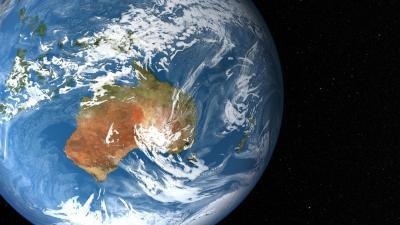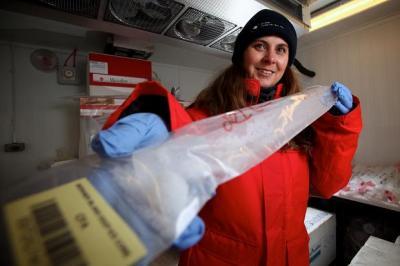While most of Antarctica is remaining cold, rapid increases in summer ice melt, glacier retreat and ice shelf collapses are being observed in Antarctic Peninsula, where the stronger winds passing through Drake Passage are making the climate warm exceptionally quickly.
Until this study, published in Nature Climate Change, Antarctic climate observations were available only from the middle of last century.
By analysing ice cores from Antarctica, along with data from tree rings and lakes in South America, Dr Abram and her colleagues were able to extend the history of the westerly winds back over the last millennium.
"The Southern Ocean winds are now stronger than at any other time in the past 1,000 years," Abram said.

Dr. Nerlie Abram, from the Australian National University, explains why ocean winds have stopped Antarctica from warming as much as other continents. Her research also explains droughts in Southern Australia.
(Photo Credit: ANU Media)
"The strengthening of these winds has been particularly prominent over the past 70 years, and by combining our observations with climate models we can clearly link this to rising greenhouse gas levels."
Study co-authors Dr Robert Mulvaney and Professor Matthew England said the study answered key questions about climate change in Antarctica.
"Strengthening of these westerly winds helps us to explain why large parts of the Antarctic continent are not yet showing evidence of climate warming," said Dr Mulvaney, from the British Antarctic Survey.
"This new research suggests that climate models do a good job of capturing how the westerly winds respond to increasing greenhouse gases," added Professor England, from the Climate Change Research Centre at UNSW.
"This isn't good news for farmers reliant on winter rainfall over the southern part of Australia."

Clouds over Australia are shown.
(Photo Credit: NASA Goddard Space Flight Centre Scientific Visualization Studio.)

Dr. Nerilie Abram is shown working on an ice core.
(Photo Credit: Paul Rogers)






Comments